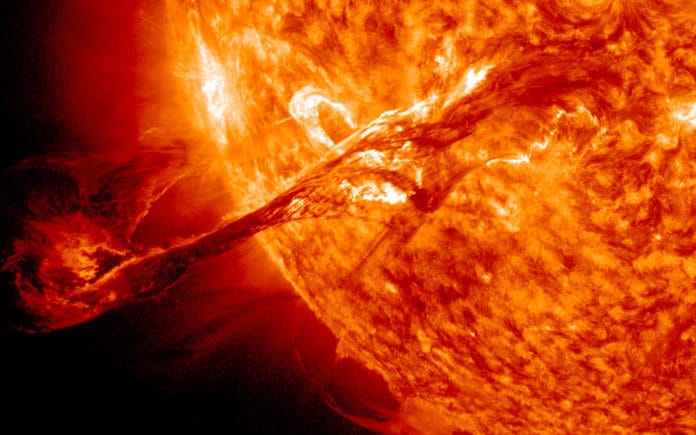The star of our solar system, the Sun, has again exploded with a geomagnetic storm. On April 11, 2022, the dead sunspot AR2987 exploded, leading to coronal mass ejections (CME).
NASA’s Solar Dynamics Observatory recorded the eruptions. This geomagnetic storm is pushing plasma and high-intensity energy toward the inner planets. Experts suggest that these G2-class geomagnetic storms could arrive on Earth on April 14 with a speed of about 20,69,834 kilometers per hour.
A new NASA model shows it is going to hit Mercury. Note the orange dot in this forecast animation:
The storm can also create auroras as far south as, e.g., New York and Idaho (geomagnetic latitude 55 degrees), suggests spaceweather.com.
On April 10, a surprising solar storm generated auroras across Canada and many northern-tier US states. Detailed investigation suggests that not all the lights were auroras, some of them were STEVE (Strong Thermal Emission Velocity Enhancement), a purple band of light that appears during some geomagnetic storms. STEVE resembles aurora, but it is different than aurora.
Harlan Thomas, who sends this picture from Station Flats in Alberta, Canada, said, “This was the brightest STEVE that I have seen. It was so bright it overcame a 22-degree halo around the moon!”
